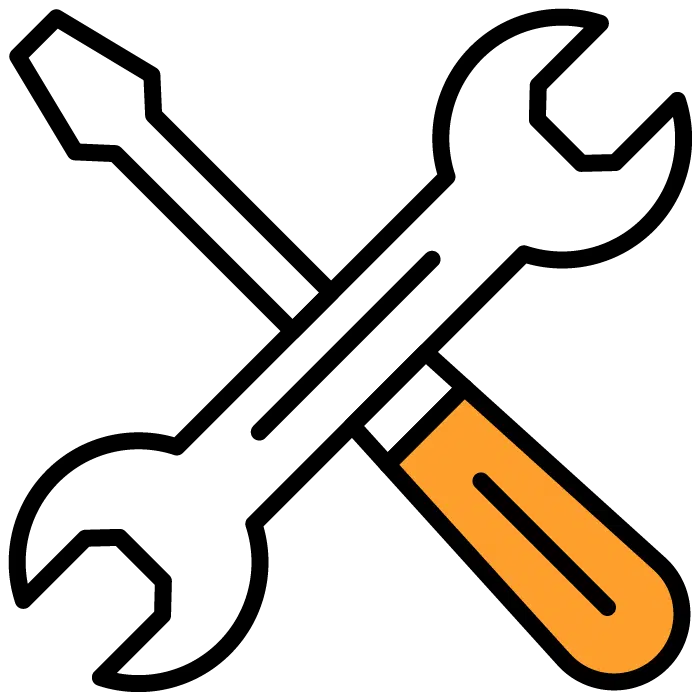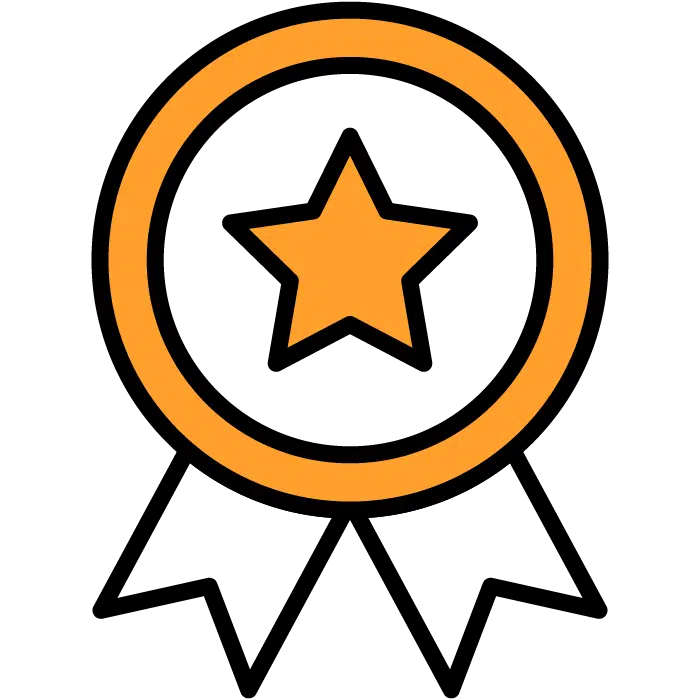If you’re asking, “How do I build a world-class career page?”—you’re not just trying to look good online. You’re trying to solve real business problems.
You’re probably growing, hiring faster than you used to, and running into gaps—too many bad fits, low applicant flow, weak pipelines. You don’t need fluff.
You need a system. A good career page isn’t about flair—it’s about function. Done right, it becomes your most valuable recruiting asset: always working, always converting.
This framework gives you one of the strongest ways to structure a career page today. But let’s be clear—it’s not the only way.
Your team size, your industry, your hiring volume, and the kinds of roles you fill will shape how much you lean on video, text, segmentation, or automation.
Still, these building blocks apply to most companies. Below, I’ll walk you through each one with detail, theory, and options so you can make it your own.
1. Hero Section: The First 5 Seconds
This is where you control the first impression. A hero section isn’t just decorative—it tells people immediately: are we serious, do we care about our team, and should you keep scrolling?
Research shows that users can make decisions about their site in 50 milliseconds. That’s less time than it takes to blink. So if your page loads with stock photography, vague slogans, or no clear call to action, you’ve already lost the best candidates.
The best hero sections show real team members at work, use a short, punchy headline that frames what kind of place this is, and drive users to the job search or EVP section with a single call-to-action button.
You don’t need motion graphics. A tight shot of a team meeting or field crew, overlaid with a line like “Build Your Future With Us,” can work just as well. Keep it short, intentional, and clean—this is the handshake, not the pitch.
2. Employer Value Proposition (EVP): Your Why
This is your main positioning statement. Why would a qualified person choose you over any of the other dozen companies offering similar money, benefits, or titles? Your EVP should answer that in one paragraph and a few proof points.
Think of it like a sales page for your company culture. It needs to be true, specific, and relevant to your ideal hire. “We care about people” isn’t good enough. What does that look like in practice?
Your EVP should hit three to five major themes: growth opportunity, culture and support, impact and autonomy, recognition, and flexibility. Don’t list everything—just the real levers that matter to your team.
Use bullet points with real language. “4-day workweeks every summer,” “Career path coaching starting month one,” “Profit-sharing after 12 months.” Be honest. Overpromising here backfires with turnover and poor engagement.
3. Employee Video Stories: Proof From the Team

Saying you’re a great place to work means nothing unless your people back it up. Recruitment marketing video is the most powerful way to show this. Candidates don’t want a pitch—they want proof. Peer stories land because they’re personal, unscripted, and relevant.
If a plant manager hears from another manager about how they got promoted, that’s a stronger motivator than anything you say in a tagline.
Structure these around specific questions, not vague prompts. “What’s been your biggest win here?” “How did this job help you outside of work?” “What advice would you give a new hire?” Keep the clips under 90 seconds. You don’t need a film crew. You need authentic answers, light editing, and good framing.
Use real titles, not just “Employee 1.” Segment the stories by team, so you can send sales prospects a different set than engineers. Bonus—these can be reused across the funnel: email sequences, interview prep, and offer stage.
4. CEO Videos: Mission and Meaning From the Top
Your CEO (or founder) shouldn’t just talk about company goals—they should explain the why. The best leaders use this space to show clarity of mission, care for people, and confidence in the future.
When done well, it adds trust and a sense of direction. Candidates want to know what kind of company they’re stepping into. Does leadership show up? Do they walk the talk? Is this a place they can grow?
This is not about charisma—it’s about being direct and human. The best CEO videos we’ve seen are short (2–3 minutes), filmed in a setting that feels real (like their office or the job site), and hit on the following:
What makes this place different? What projects are we excited about? What do we believe in? What are we building? Don’t script every word—just outline the beats. Let it feel real. The goal is to show leadership presence, not polish.
5. Deep-Dive Text Blocks: Let People Read, Not Just Watch
Not everyone wants video first. Some want to skim and click deeper if something grabs them. That’s where these deep-dive blocks come in. They’re like expandable story sections.
Think: a quote from an employee, a short paragraph about a cultural value in action, a link to a longer article, or even a short clip preview. They also improve SEO—videos alone can’t carry you if you want to show up in search.
These work best in two-column or card layouts. Keep them scannable. A good strategy is to use them at different stages—early on the main page, then send deeper cuts (e.g., onboarding stories, internal mobility) once a candidate applies or books an interview.
📈 There’s growing evidence that well-structured, informative career websites significantly influence applicant behavior. When thoughtfully designed, they help candidates better understand your culture, expectations, and values, ultimately leading to more qualified applications. This research on what works in career websites supports the idea that clear content, user experience, and relevance are all critical for engagement and conversion.
This helps keep the experience personalized and intentional without overwhelming the visitor on page one.
6. Mission & Core Values: Culture On the Record

If you say culture matters, show it. That means you need to name your values clearly, explain them plainly, and give evidence that they show up in real life. People are jaded.
Everyone has “integrity” and “teamwork” on their wall. What they want to know is what those mean to you. So define them in one line each and link to stories or photos that make them real.
Your mission should be short enough to remember and meaningful enough to discuss. “We exist to simplify hiring for small businesses” is better than “To be a global leader in scalable talent solutions.”
You don’t need fancy value language. You need clarity. You also need to revisit these once a year and decide if they’re still relevant. If not, revise or drop them.
7. Static Info Modules: Help Candidates Self-Qualify
Static content—benefits, perks, FAQs, diversity statements—may feel like filler, but it plays a key role. This is the data people use to self-qualify. Can I relocate? Do you offer visa support? What’s your PTO policy?
You want this content to be easy to find and structured for scanning. If they have to click five times or email your recruiter, they may just bounce.
Put this in a clearly labeled section or tab. Use icons and headlines. Be direct. If you don’t offer hybrid work, say so. If you do, give examples of how it works.
Link to your DEI page, and if it’s thin, either improve it or hold off until it’s real. Candidates can smell performative content, and it will hurt your reputation if it doesn’t match their experience.
8. Job Search and Listings: Make It Functional, Not Fancy

Most career pages fail at this step. Either the search is broken, the filters are useless, or the roles are pulled from an ATS that looks like it was built in 2005. This part should be simple: search bar, role cards, filter chips. Role cards should have the job title, location, summary, and a fast “Apply” button that actually works. Don’t make them log in just to apply. Let them upload a resume and hit submit. That’s it.
Make sure roles are grouped smartly—by department or location. Consider including tags like “Urgent Hire” or “Remote Available.” Keep the listings clean. Job descriptions should be clear, not copied from legal. If you need to, use the top of the JD to include a summary written in plain English and link to the full spec below.
9. Footer: Keep It Useful
Your footer should be the catch-all for anyone who made it this far but hasn’t taken action. Include recruiter contact info. Link to your Glassdoor, Indeed, and LinkedIn pages. If you have a blog or case studies, give them a way to explore more about your business. Make it easy to reach out, easy to research, and easy to re-engage.
Final Thoughts: This Is a Blueprint, Not a Rulebook
Every company is different. What works for a 200-person logistics company might not work for a 10-person fintech startup or a 1,000-person manufacturer. The point isn’t to copy someone else’s layout. It’s to understand the purpose behind each part of a strong career page and adapt it to your team, your culture, and your goals.
The best pages aren’t built overnight. They’re shaped by actual hiring problems. If you’re losing candidates halfway through the funnel, fix your job listings. If they ghost after interviews, send better video content. If no one’s applying, revisit your EVP. Your career page is your silent recruiter. Make it work.
Proposing Mockup Structure
The user seems to want a world-class career page mockup with a conceptual structure. I’ll suggest starting with a Hero section: background image, compelling headline, and a clear CTA. Next, an EVP section (Employee Value Proposition) with both text and concise bullet points. Following that, I’d include video modules for employees and CEO, along with text blocks telling the company story. There should be areas for static content and the ability to update, along with deep-dive text boxes used throughout the hiring process.
Designing career page modules
For a career page, I’ll suggest modules based on the user’s goals. First, employee video modules about career paths, culture, challenges, and personal growth. CEO videos should cover values, projects, and motivation. Then an EVP compilation video, followed by deeper text blocks with stories. A mission & values section is key too. Static content like benefits, FAQs, and job listings should be included, with room for dynamic updates. I’ll design a simple, straightforward table outlining each section’s purpose and content. I’ll avoid complex jargon and words on the ban list.
Here’s a simple mock-up outline for a top-notch careers page. You can hand this to your designer or build it in your CMS. Each section is a module you can turn on or off as you hire.
1. Hero Section
- Full-width image or looped video that shows real people at work
- Headline: “Join [Company Name]”
- Subhead: “Where your work makes an impact”
- Primary CTA: “See Open Roles”
2. Employer Value Proposition
- Heading: “Why You’ll Love Working Here”
- Short text block (2–3 lines) that sums up your offer: growth, culture, impact, pay
- 3–5 bullet points highlighting your key perks (e.g. career coaching, flexible hours, volunteer days)
3. Team Stories (Video Grid)
Heading: “Hear From the Team”
Display cards in a 3-column grid (or carousel on mobile), each with:
- Thumbnail + play icon
- Video title
Videos cover these prompts:
- “My career path at [Company]”
- “How this role helped me meet my goals”
- “Our team culture—what I love most”
- “Tips for new hires to thrive”
- “Why my work feels satisfying”
- “Early-career challenges and how I beat them”
- “The best part of working here”
4. CEO Insights (Video Grid)
Heading: “A Word From Our CEO”
Same layout as above, with these video topics:
- “What makes us unique & our core values”
- “Exciting projects we’re working on”
- “How we grow our people”
- “What every new hire should know”
- “Keeping the team engaged”
- “The impact we aim to make”
5. Deep-Dive Text Blocks
Use these below the video grids or on follow-up pages as candidates move along. Two-column layout works well. Each block has:
- Quote or short story (1–2 sentences)
- Link to the full video or a longer write-up
You can swap which stories show up here as needs change.
6. Mission & Core Values
- Heading: “Our Mission”
- One-sentence mission centered on impact
- Values row: icon + value name + 1-line description
- Leave space for updates as values evolve
7. Static Info Modules
These live further down or on a tabbed area:
- Benefits & Perks (icon grid)
- FAQs in an accordion
- Diversity & Inclusion statement
- Links to blog, news, policy docs
8. Open Roles & Search
- Job search bar (keywords + location)
- Filter chips (team, type, level)
- Role list: title, location, short blurb, “Apply” button
9. Footer
- Social links (LinkedIn, Glassdoor, etc.)
- Contact / recruiter email
- Legal links
How to use it:
- On the main page, show hero → EVP → video grids → open roles.
- In nurture emails or interview pages, pull in the deep-dive text blocks or single videos on demand.
- For quick updates, swap out thumbnails, text, or videos without a rebuild.
This structure keeps things clear. It guides candidates from “Why us?” to “Meet the team” to “Apply.” You can layer in more modules—like awards, press logos, or live job-count—where it makes sense.
Final Note: A career page is an integral part of your hiring strategy. Get in touch with our hiring experts to revolutionize your entire hiring process.




